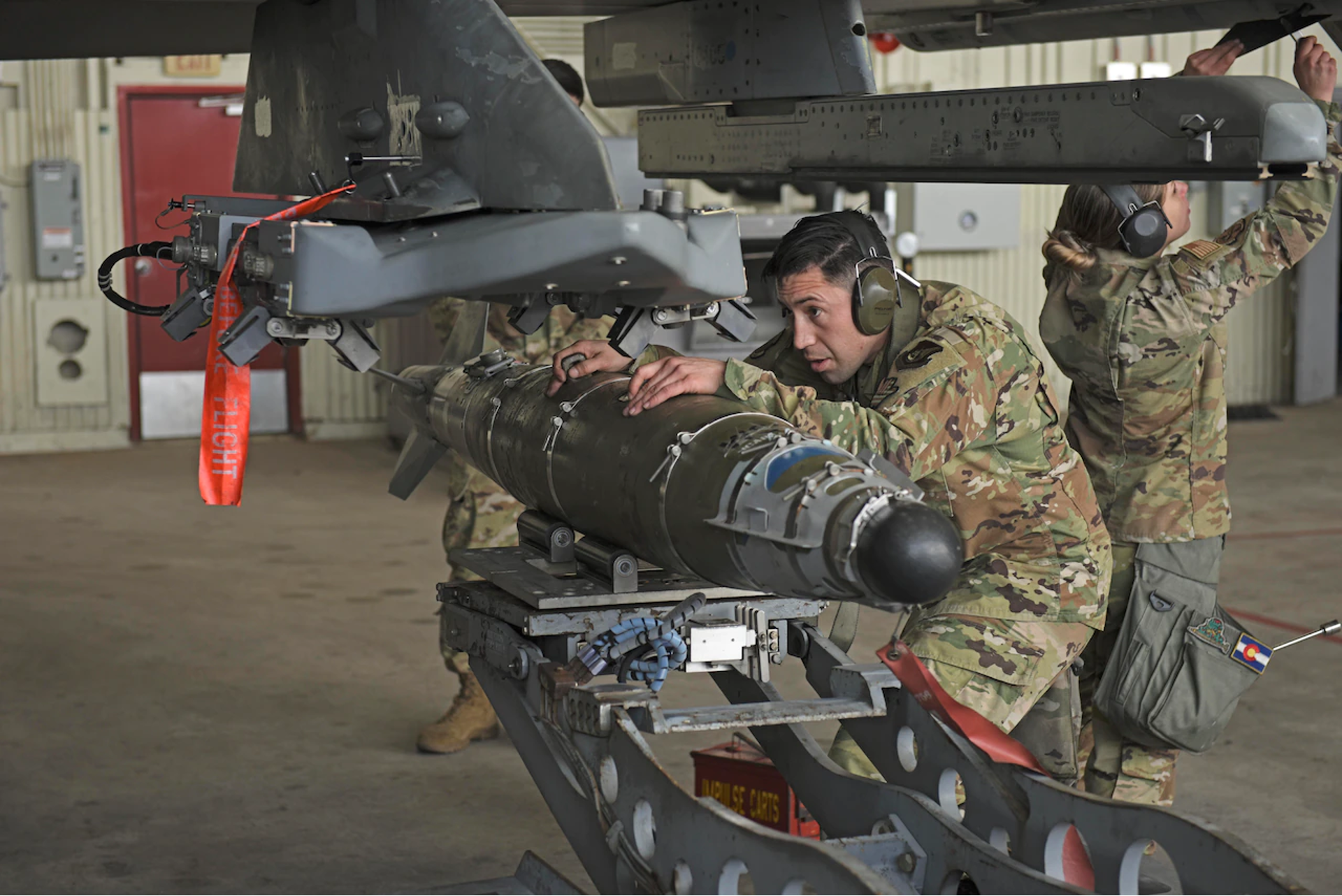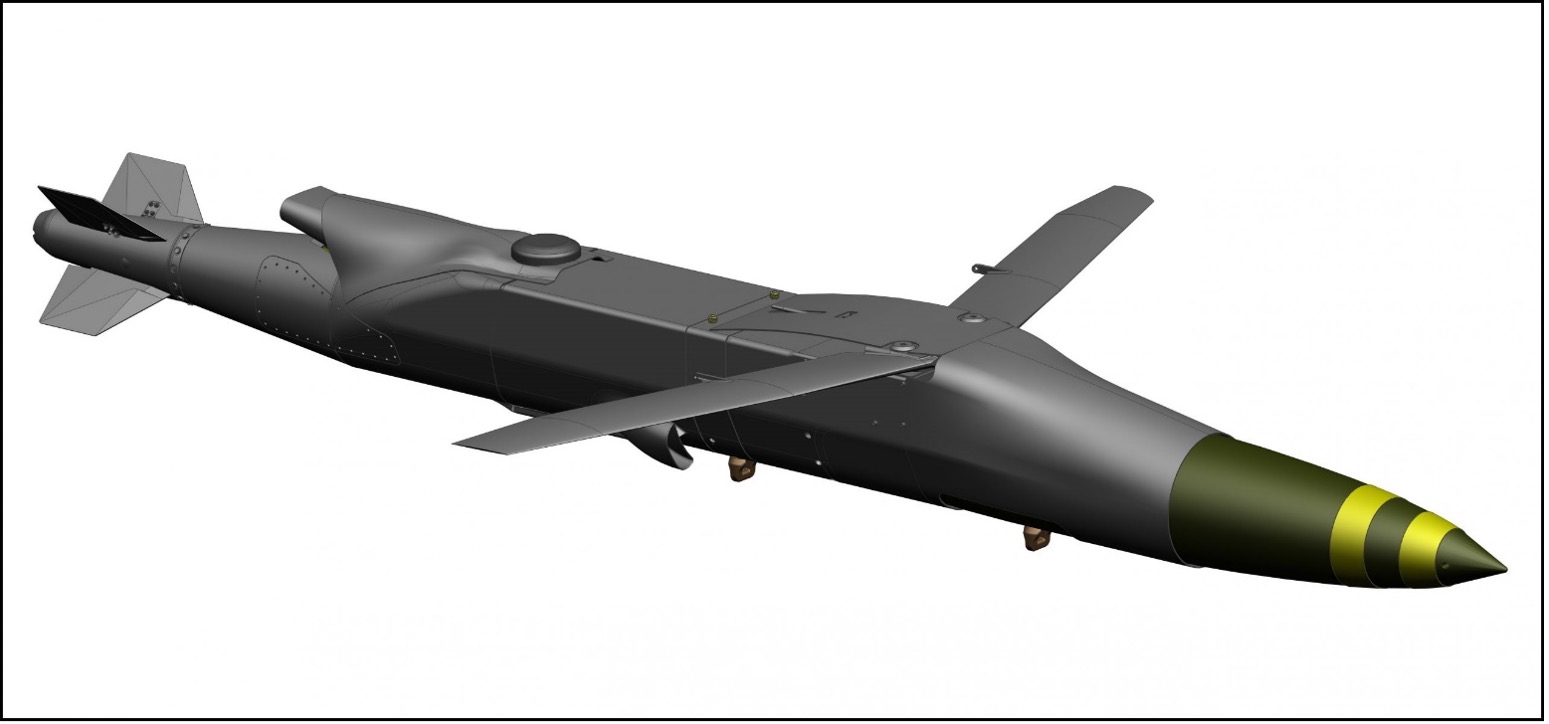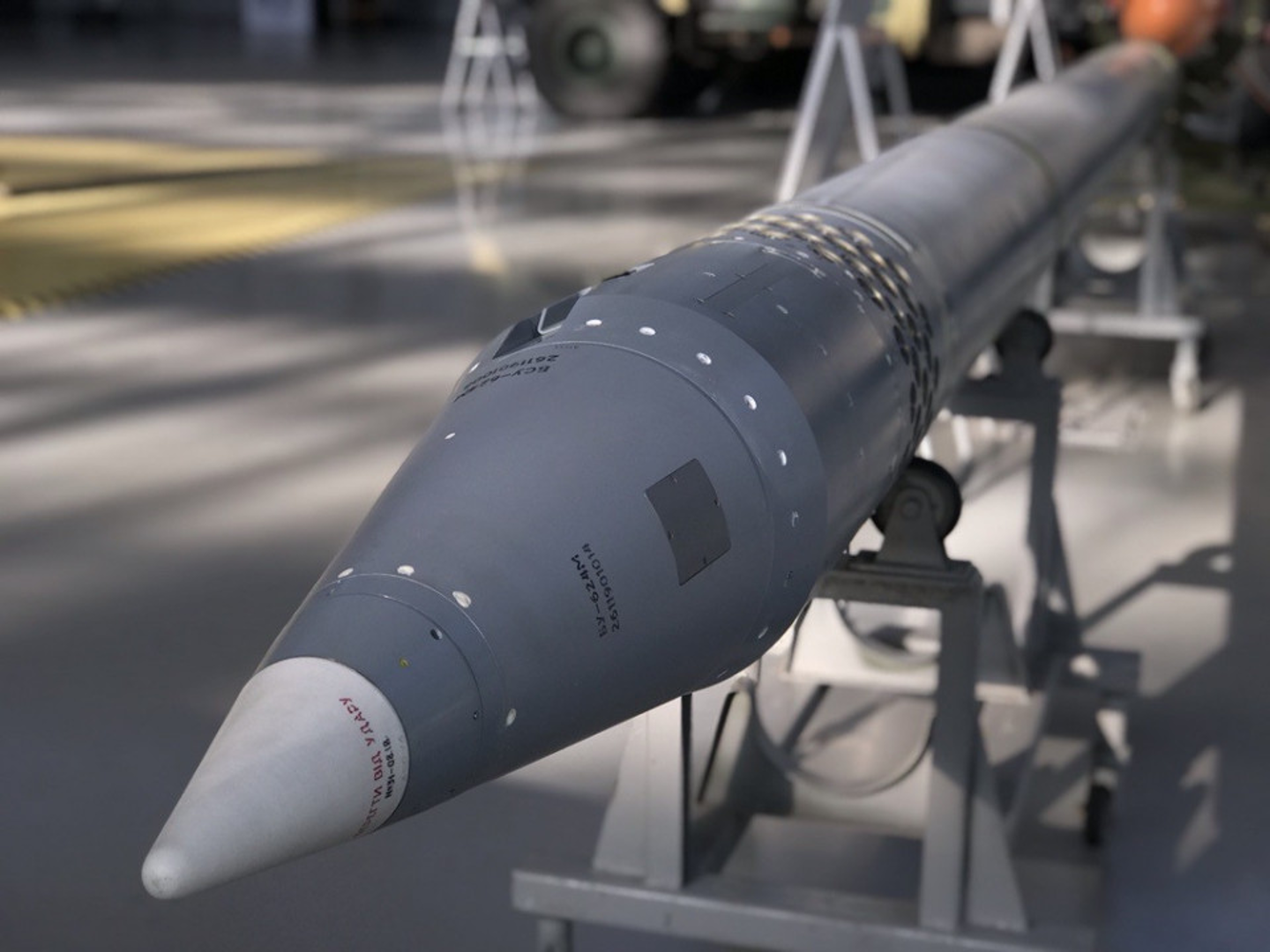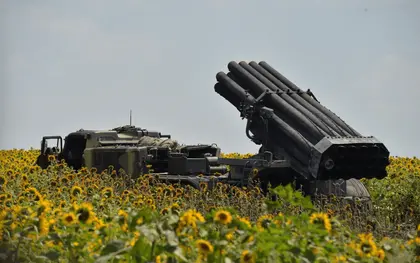There is recent evidence that Ukraine has a range of new precision-guided weapons, some developed and manufactured domestically, that will not only increase its ability to engage long-range targets in Russia-occupied territory but also to increase the payloads delivered to the target.
One such high-tech weapon now employed by the Armed Forces of Ukraine (AFU) to strike Russian rear areas is the Joint Direct Attack Munition-Extended Range (JDAM-ER) precision-guided bomb. This is U.S. made kit which is designed to fit a conventional bomb with gliding wings and a GPS guidance system, which gives the user the capacity to fly a 500-kilogram high explosive warhead to within a couple of meters of a target.
JOIN US ON TELEGRAM
Follow our coverage of the war on the @Kyivpost_official.
 Air Force Staff Sgt. David Torres loads a JDAMS guided bomb aboard F-16 Fighting Falcon aircraft during a weapons load crew competition at Kunsan Air Base, Republic of Korea, Jan. 3, 2020. US Air Force official photograph.
Air Force Staff Sgt. David Torres loads a JDAMS guided bomb aboard F-16 Fighting Falcon aircraft during a weapons load crew competition at Kunsan Air Base, Republic of Korea, Jan. 3, 2020. US Air Force official photograph.
On Mar. 6, U.S. Air Force General James Hecker, head of U.S. Air Forces in Europe (USAFE), is quoted in the American military magazine War Zone, said “That's a recent capability that we were able to give them [the AFU] probably in the last three weeks."
It was announced in Washington in December it would, for the first-time, transfer JDAMS-ER kits to Ukraine. Hecker’s comments were the first direct confirmation by a Pentagon official that the system with a range of 70+ kilometers from point of drop had reached the field in Ukraine and was being actively employed by the AFU air force.

Kyiv Hit by Massive Drone Attack as Russian Strikes Target Multiple Ukrainian Cities
In recent weeks military analysts had widely speculated that Ukrainian aircraft were penetrating deep into Russia-controlled air space and using the JDAMS-ER to hit targets otherwise well out of the range of weapons known to be in the AFU armory.
The Belbek airfield in Ukraine’s Crimea peninsula, a region occupied by Russian troops in 2014 and heavily militarized by the Kremlin, saw strikes by an unknown airborne weapon on Mar. 4 and a series of explosions on Mar. 7.
The air base, a key launch site for Russian bomber and missile strikes on Ukraine, is some 240 kilometers from the nearest Ukraine-held territory and well outside the range of practically all weapons previously known to be held by the AFU. The most commonly-used and best-known long-range strike weapon operated by the UAF, is the M31 GPS-guided missile, which has a reported maximum range of 80 kilometers, which is fired from the U.S.-made M270 and HIMARS artillery systems.
Ukrainian kamikaze drones, which are only able to carry a few kilograms of explosive, have stuck targets in Crimea regularly since September. While focusing the minds of the enemy, these lack the destructive power to effectively destroy rail lines, demolish buildings, Russian troop housing. Bombs mated with the JDAMS-ER guidance kit are orders of magnitude more powerful.
On Mar. 4, in the southern Russia-occupied city of Melitopol, a distance of some 90 kilometers from the nearest Ukrainian combat units, a series massive blasts reportedly demolished two troop barracks. Mayor-in-exile Ivan Federiv said in a national television interview that “hundreds of Russians died”. According to unconfirmed video published by the Ukrainian volunteer group Gruz200 on the same day similar powerful strikes hit an artillery unit assembly area to the south of the Melitopol.
Russian sources reported explosions in the city but gave no details of damage. Some information platforms published images of three-meter-wide craters in a farmer’s field. They suggested that the Ukrainian weapons fired at Crimean targets were Soviet-era Tu-141 Strizh reconnaissance drones, modified to carry an explosive warhead. Russian air defenses according to those reports shot at least one of the drones down near the Crimean village of Gvardeyska.
The most spectacular confirmed Strizh strike took place on Dec. 6 when the modified munitions flew up to 600 kilometers to hit Russian bomber bases in Saratov and Ryazan. Kremlin spokesmen said damage was negligible, while Ukrainian officials said at least five Russian heavy bombers were damaged or destroyed. Open source satellite images in following weeks seems to support Ukrainian claims.
On Mar. 6, the Ukrainian military analytical magazine War Zone suggested that the weapons used in the attacks on Gvardeyska were not Strizh drones but rather a home-grown, GPS-guided missile carrying a warhead the size of a typical aerial bomb.
 Standard US-made 500 lb. bomb fitted with a JDAMS-ER precision-guidance kit. The folding wings extend range. Drawing by Air Force Magazine.
Standard US-made 500 lb. bomb fitted with a JDAMS-ER precision-guidance kit. The folding wings extend range. Drawing by Air Force Magazine.
The War Zone article, citing Ukrainian industrial research official Ivan Vinnik said this newly operational Ukrainian weapon system, called Vilhka-M, was a modified version of the BM-30 ‘Smerch’ missile, a powerful but highly inaccurate 1990s-era rocket artillery launcher.
Ukrainian engineers had upgraded the ‘Smerch’ rockets by installing a multiple-nozzle system in a belt around the midsection of the rocket, enabling it to make flight course corrections driven by GPS information and microchip processors. The Ukrainian weapon is said to have a range of 110 kilometers which is well beyond the 80 kilometers of the U.S. M31 missiles. They claim that work is already in progress to extend Vilkha-M’s range to 150 kilometers.
Melitopol is over 90 kilometers from the nearest Ukrainian-held territory which, a year ago put it beyond the reach of the artillery then held by the AFU. That has now changed and it seems that the AFU now has a range of munitions capable of reaching well beyond the range of both Russian weapons and those provided by western allies.
The U.S. possesses similar long-range weapons but has hesitated to turn them over to Ukraine, because of concerns they might be used to strike Russia. According to news reports, Kyiv and Washington have agreed that the medium-range weapons the US is providing to Ukraine will not be used to hit targets in mainland Russia.
In a Mar. 7 strategic overview Igor Rozhin, a high-profile Kremlin military correspondent, predicted that there would be an intensification of AFU strikes on Russian army support and logistic facilities with the aim of weakening the Russian army’s ability to resist an impending Ukrainian ground offensive. The strikes will be as deep into the Russian rear area as the AFU is capable, he predicted.
In Washington D.C., John Kavulich Senior Editor for the Issue Insight magazine said in comments to the Kyiv Post: “There will unlikely be any degradation in military equipment deliveries to Ukraine from NATO members and non-NATO members due to increasing Ukrainian long-range strike capacity. Counterintuitively, there will be messaging from some heads of state and heads of government that BECAUSE of the inventiveness of the Ukrainians, the collective ‘West’ has to ‘step-up and help these people.’”
 300mm rocket modified by Ukrainian engineers to use a modern GPS guidance system. Note the flight control exhausts installed below the warhead. Photo from the official Ukrainian military information site armyinform.com.ua.
300mm rocket modified by Ukrainian engineers to use a modern GPS guidance system. Note the flight control exhausts installed below the warhead. Photo from the official Ukrainian military information site armyinform.com.ua.
You can also highlight the text and press Ctrl + Enter






